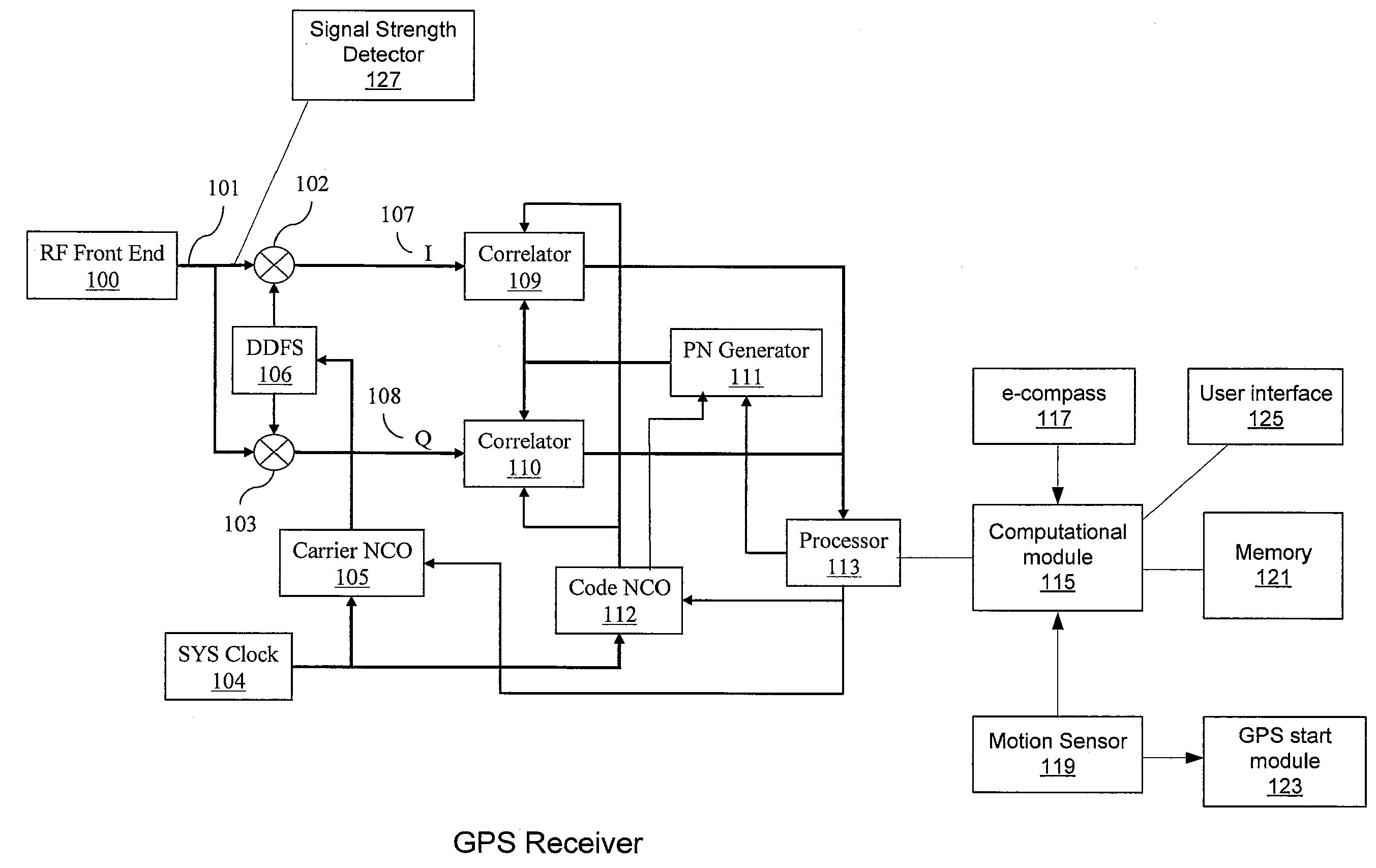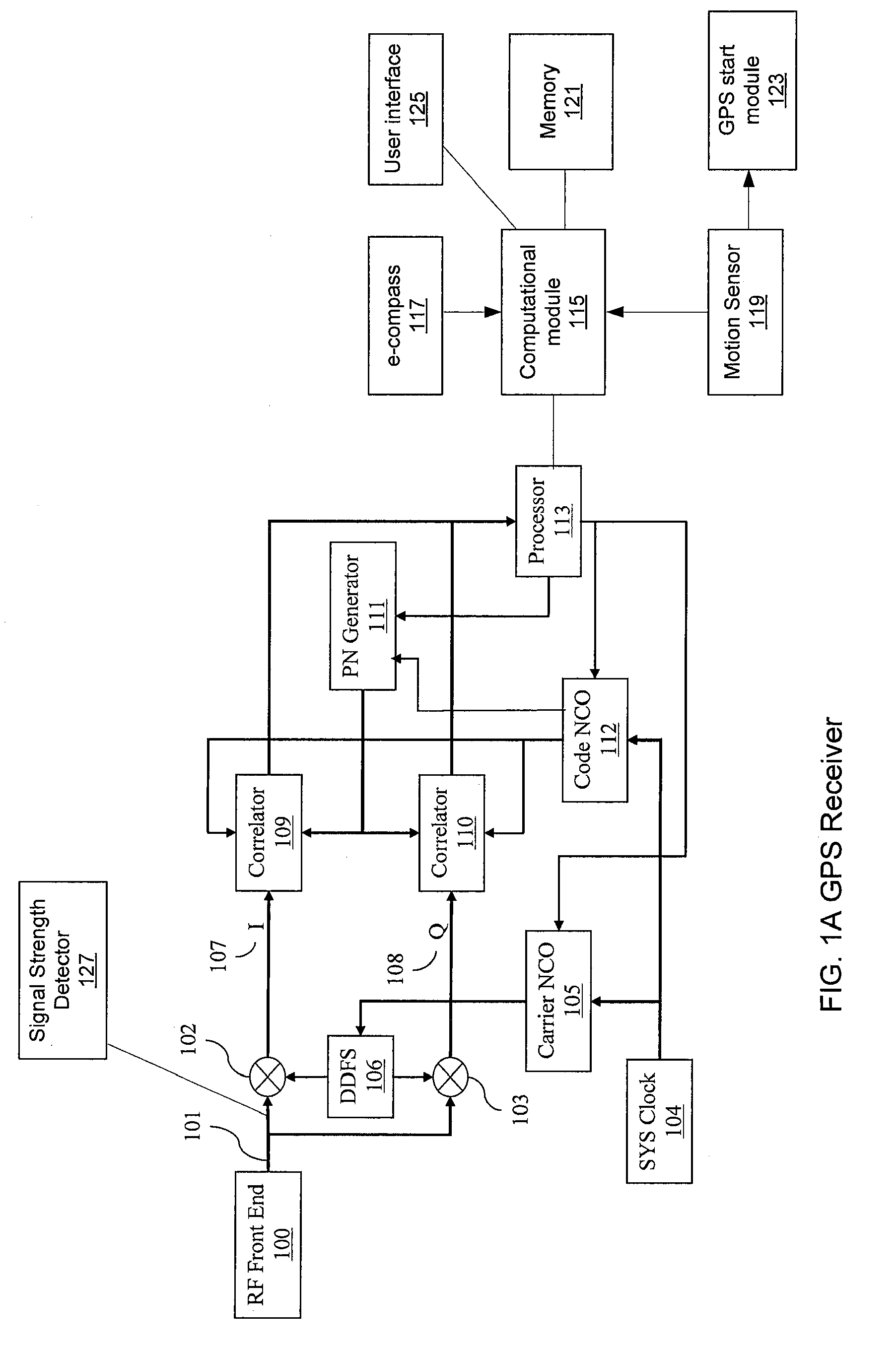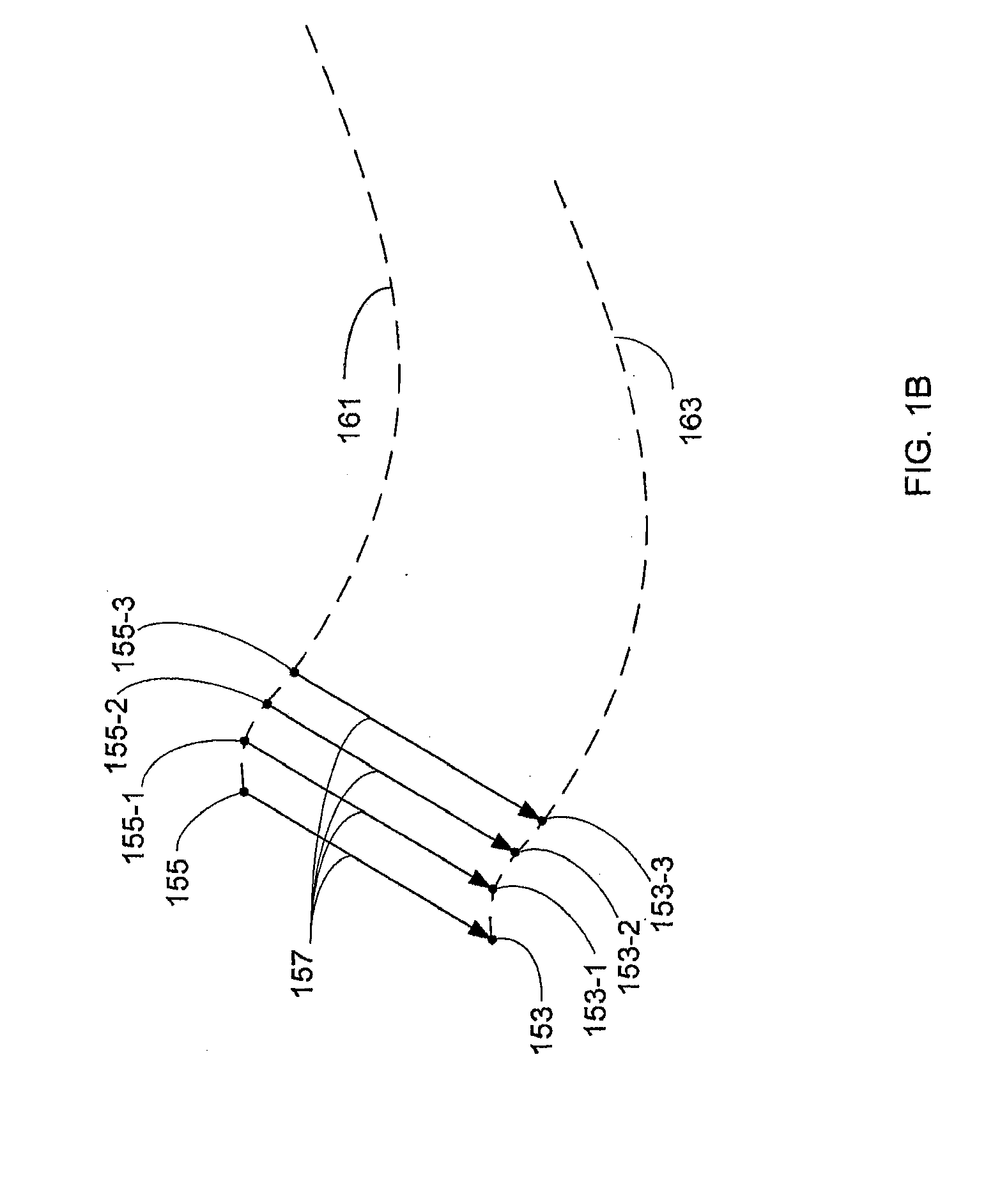Navigation signal receiver trajectory determination
a technology of navigation signal and receiver, which is applied in the direction of satellite radio beaconing, measurement devices, instruments, etc., can solve the problems of inability to maintain a copy of current ephemeris in the receiver, inability to fix the first position in time, and instability of local oscillators
- Summary
- Abstract
- Description
- Claims
- Application Information
AI Technical Summary
Benefits of technology
Problems solved by technology
Method used
Image
Examples
Embodiment Construction
[0025]FIG. 1A illustrates a receiver according to a preferred embodiment of the invention. An intermediate frequency (IF) signal input 101 enters a baseband section of the receiver from an analog-to-digital converter (ADC) output of a conventional RF front-end 100. The IF input is multiplied in IF mixers 102 and 103 in-phase and in quadrature, respectively, with a local frequency signal generated by a direct digital frequency synthesizer (DDFS) 106. This mixing involves multiplying the ADC output 101 by the local DDFS frequency in-phase which generates the in-phase component I 107. In a parallel path the same signal 101 is multiplied by the DDFS frequency in quadrature (i.e., with a phase shift of 90 degrees) to produce quadrature component Q 108. The DDFS 106 is driven by a carrier numerically controlled oscillator (NCO) 105. In addition, carrier NCO 105 receives phase and frequency corrections from a processor 113. Because of this correction, the DDFS frequency and phase is almost...
PUM
 Login to View More
Login to View More Abstract
Description
Claims
Application Information
 Login to View More
Login to View More - R&D
- Intellectual Property
- Life Sciences
- Materials
- Tech Scout
- Unparalleled Data Quality
- Higher Quality Content
- 60% Fewer Hallucinations
Browse by: Latest US Patents, China's latest patents, Technical Efficacy Thesaurus, Application Domain, Technology Topic, Popular Technical Reports.
© 2025 PatSnap. All rights reserved.Legal|Privacy policy|Modern Slavery Act Transparency Statement|Sitemap|About US| Contact US: help@patsnap.com



